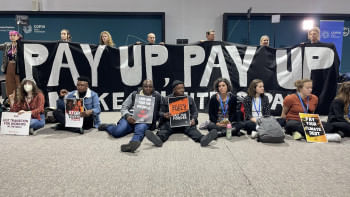Accepting Identities

When in 2014, the government officially declared the hijras to be the third gender in Bangladesh, the hijra community did the victory dance. They took to the streets and celebrated the first Hijra Pride Parade in Bangladesh. "Yes I celebrated too," says Rani, a member of the hijra community who performs for a living and also begs at signals occasionally when need rises. "It was indeed a great day for us. But still, we are looked upon as outcasts in society. We are not given jobs or provided with training of any sort. If we are not provided with any education, how can we be expected to do something worthwhile with our lives? At the end of the day, we are still stigmatised."
There are many different kinds of identities in the world. Particularly in Bangladesh or in other parts of South Asia, we have finally come to accept hijras, especially after the government declared them to be the third gender, officially, in Bangladesh. The hijra community in Bangladesh or in South Asia, is more of a culture rather than a gender. According to reports, the government says that there are around 10,000-15,000 hijras in the country. However, rights groups put the number of hijras in the country at around half a million, according to another report.

With more than thousands of hijras in Dhaka alone, the term 'hijra' refers to the long standing culture – where it comprises transgenders and also those who feel that they are trapped inside the bodies of another gender – transsexuals. Nowadays, in other parts of the world, many are changing their genders with the help of surgery and hence trying to live a normal, decent life.
Earlier this year, the annual Stockholm Pride was organised in the capital city of Sweden, where members of the LGBT groups swarmed in from all over the world to attend and voice out. Much more than a parade, the idea of organising the Stockholm Pride week is to bring together people from all walks of society and educate them about the LGBT community. Pride is observed through out the whole week, where people greet each other with a 'Happy Pride' along with the usual hellos and also sign off their emails with a 'Happy Pride' as well!
The week was also well spent by educating international journalists about ways to make others aware through subtlety, diplomatically, academically, yet assertively. For instance, a meeting with writers from the LGBT group revealed how they were trying to make children aware of the different sexual identities through picture books. "Our stories mirror the contemporary society. The children's every-day reality shows a magnificent diversity in ways of being and ways of living," says Karin Salmson from Olika förlag (Different Publishing), a
multi awarded independent publishing house specialised in children literature with focus on gender equality and diversity. "By broadening the scope of children´s literature and including new ways of life, more children will be able to find identification and thereby increase their self-esteem."
The unique picture books Salmson shared with the journalists showcased the idea of a child having two mothers or two fathers, as nothing but a normal element of society. "Our stories both challenge and broaden the narrow gender stereotypes so often found in children's literature. We are also aware of how we portray different ways of forming a family, ethnicity and disabilities."
Clearly, the society in Bangladesh and also South Asia will require more time to accept the different identities and that we see around us everyday. Despite the official recognition of the third gender, thousands from the hijra communities are still unable to live decent lives in Bangladesh. The fact that it might take a few generations to stop being ostriches and accept the age old concept of the existence of different identities and genders, is truly a scary one.


 For all latest news, follow The Daily Star's Google News channel.
For all latest news, follow The Daily Star's Google News channel. 



Comments